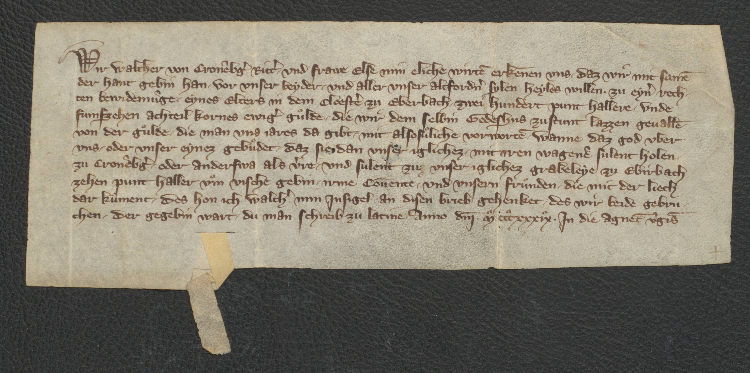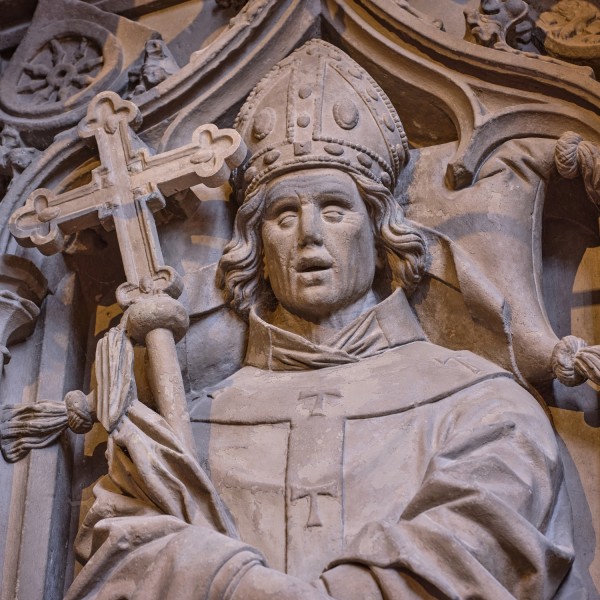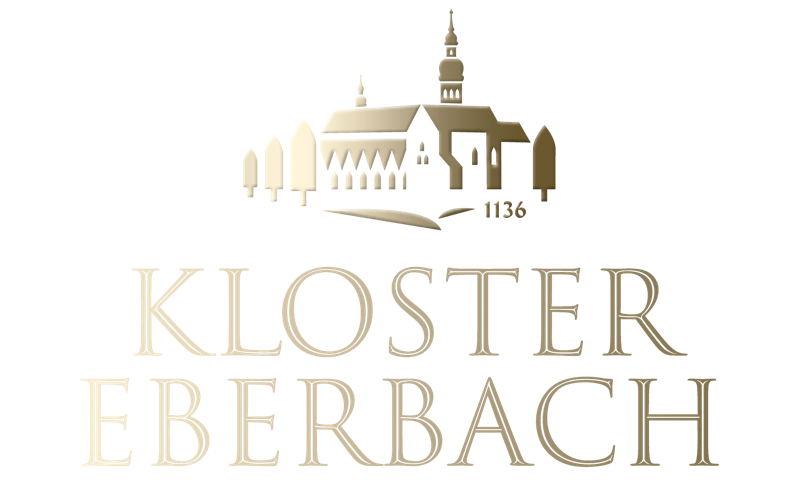Walter also donated his money to Eberbach Monastery, where he and his second wife Elisabeth of Ingelheim donated the altar of the Chapel of Saints Felix and Adauctus, among other things. This also gave him the right to be buried in front of this altar. When Elisabeth died in 1344, Walter had an unusual armorial tombstone made for her grave in the chapel, which also commemorated his first wife Lisa of Rheinberg. Walter then found his own resting place right next to it in 1353. According to the agreement made when the altar was donated, the monks of Eberbach were obliged to collect his body from Kronberg and bring it to their monastery (see Certificate in the Hessian Main State Archive).
Picture: Certificate 766 from fonds 22 of the Hessian Main State Archive

The design of the funerary monument was left to them - and this may explain why the rich knight was given a rather simple tomb slab, whose pictorial design was limited to his family coat of arms and followed the guidelines of the Cistercian order. This also explains the use of Gothic minuscule for Walter's epitaph. This typeface was still a recent development around 1350 and was particularly popular among clergy and rather rare among lay people. In Eberbach, it was also used at the same time on the heraldic tombstone for Friedrich Brenner of Manubach, the production of which probably also goes back to the convent. These Eberbach monuments are the first in a whole series of similarly designed heraldic tombstones from the second half of the 14th century.
Source: German Inscriptions Online (43, No. 81), Academy of Sciences Mainz
Image of the tomb: Michael Leukel
More tombs

Tombstones
These are fascinating life stories that can be found carved in stone in Eberbach - and which are now being told with the help of a QR code project.
